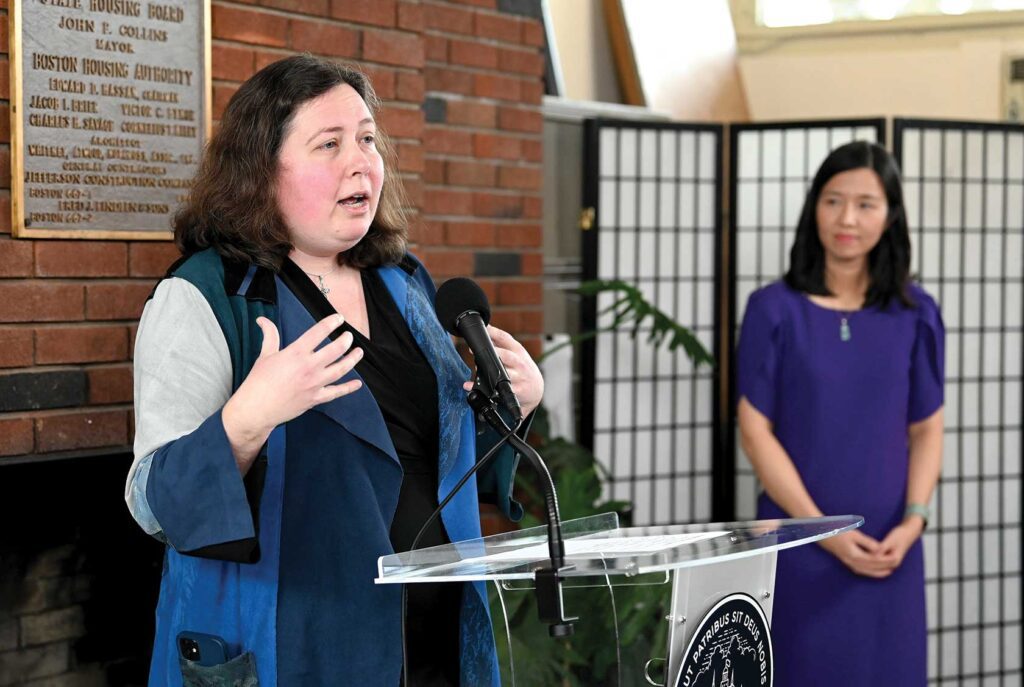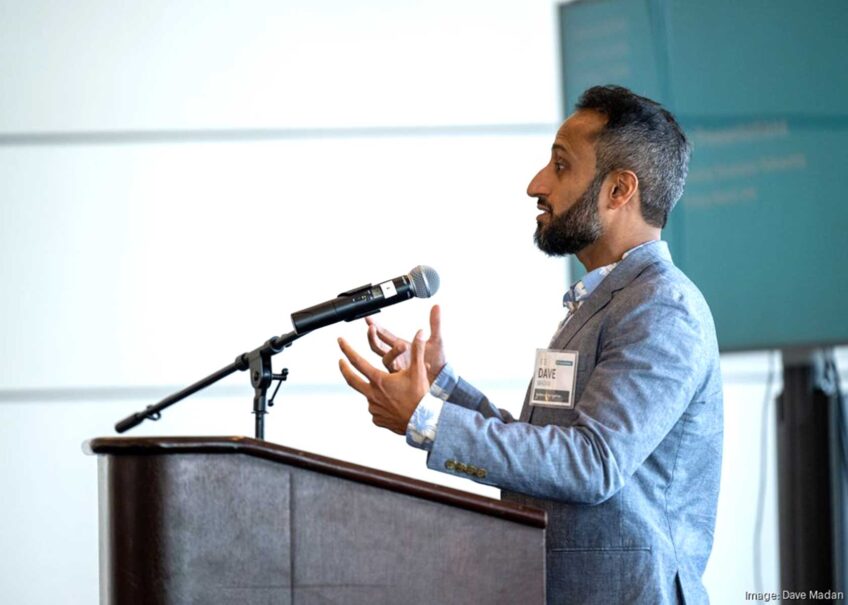
A new pilot program will bring cleaner heating and cooling to public housing residents in Dorchester using ground-source heat pumps.
The pilot, a partnership between National Grid and the city of Boston, will replace an aging boiler at Dorchester’s Franklin Field Apartments with a geothermal system to allow the Boston Housing Authority to serve 129 of the development’s 450 units with fossil-fuel-free heating. Construction at the site is slated to begin in 2025.
“We see geothermal as both a critical technology for getting off of fossil fuels, and also a way to deliver a better quality of life for our residents than ever before,” said Kenzie Bok, administrator of the BHA.
Heat pumps feature prominently in city and state goals for green energy and electrification, especially due to their high efficiency. The addition of geothermal energy at Franklin Field marks one of the city’s first major steps to making the entire Boston Housing Authority fossil-fuel-free — something it aims to do by 2030. At the state level, the Healey-Driscoll administration has a goal of installing 100,000 by 2025 and 500,000 between 2025 and 2030.
Heat pumps work by taking heat from one place — in the case of Franklin Field, the source will be piping underground where temperatures hover at about 55 degrees year-round — and moving it to another, using the physics of compressing and expanding gases to amplify the movement of heat.
By using energy to transfer heat rather than produce it, ground-source heat pumps can be highly efficient, sometimes generating three times the amount of heat energy for the amount of electrical energy used.
“That may seem like it violates some law of physics, but in this case, they work,” said John Rogers, a senior energy analyst at the Union of Concerned Scientists. “It’s almost magical in that regard, but it’s not — it’s science.”
In the winter, underground piping moves water that picks up heat from the soil. It heats a refrigerant coolant that, when compressed, produces more heat, which is used to pump warm air through a home.
In summer, the heat is pulled from inside the home and deposited in the ground, which is now relatively cooler than the air, allowing the same equipment to cool a space in addition to heating it.
For the average homeowner, considerations around heat pump installation can include whether to use ground-source heat pumps or air-source units that pull heat from the air, whether to pump heat into one room or across a house through ducts, and whether to convert a whole home or just part of it.
Rogers said heat pumps are growing in popularity. Nationwide, the sale of heat pumps outpaced gas-powered furnaces for the first time in 2022, according to industry statistics.
In New England, the state of Maine set goals in 2019 to install 100,000 new heat pumps by 2025, a benchmark they exceeded two years early in July. The state has been slower around the installation of heat pumps in low-income homes. In December, state data showed it was a little over halfway toward its goal of 15,000 new heat pumps in low-income households.
For Boston, Bok said, it’s important the city puts public housing residents first, and the installation at Franklin Field is really “walking the walk.”
Historically, factors like expensive technology and lower homeownership rates have limited access to green technology for some of the communities that are most impacted by climate change impacts, like poor air quality and heat islands, said Joel Wool, deputy administrator for sustainability and capital transformation at the BHA.
“It’s really important as we go forward that low-income communities, communities of color, non-English speakers and other populations are not at the back end of the implementing green technologies and planting healthier energy solutions,” he said.
The work at Franklin Field is part of a broader effort to learn how to incorporate the technology at a neighborhood level. It’s National Grid’s second geothermal pilot — the first broke ground in Lowell in 2023 — while Eversource is running one in Framingham that started in 2022.
Bok said this work presents a unique opportunity in the experiment by streamlining the process with a single owner.
“For us, you can serve quite a dense number of families, but all dealing with the same owner — the housing authority,” Bok said.
Learning how to add the technology at scale will be an important step in its rollout, Rogers said. Ground-source heat pumps require the installation of pipes underground. Once installed, they can be connected to more than one home.
“You’re drilling the wells, and once you’ve done that, you can serve not just a single home but a building or even a neighborhood that uses the same principle [for heating and cooling],” Rogers said.
Beyond the pilot program, the BHA is conducting a $50 million gut-retrofit of the Mildred C. Hailey complex in Jamaica Plain that will tackle overdue maintenance work while also addressing energy efficiency and air quality concerns to make the site more sustainable.
So far, much of the work toward the BHA’s goal has focused on shifting active projects from fossil-fuel-based to electric — for example the heat pumps at Franklin Field came out of plans to replace the aging boiler with another natural gas boiler. Within the past six months, the housing authority has been working on developing a plan for the rest of its properties, considering which buildings have the potential for different technologies like geothermal energy or solar panels, while also considering federal tax credits that are available in the Inflation Reduction Act.
“It’s really kind of like a huge jigsaw puzzle,” Bok said, “to figure out you know, which sides of the BHA we can move on most quickly, and how we like line everything up in a cascade to hit that 2030 target.”
Where more geothermal energy will fit into that picture remains to be seen, but Bok said the housing authority would love to introduce more of it.
The implementation of the heat pump technology at scale is still new, but Bok said the agency is looking at which other properties might have good geothermal potential.
“We’re excited to get the ball rolling, and we hope it keeps rolling,” she said.






